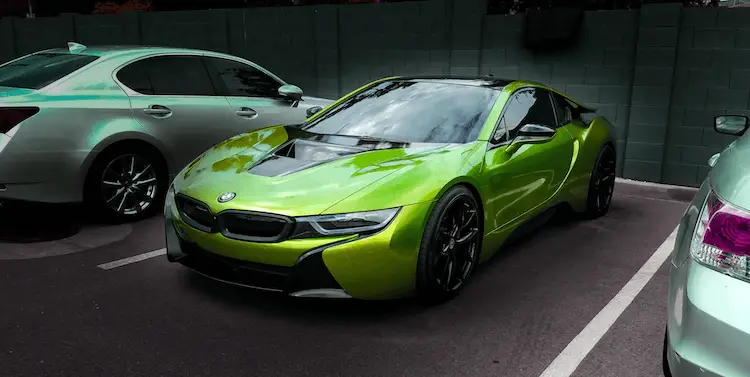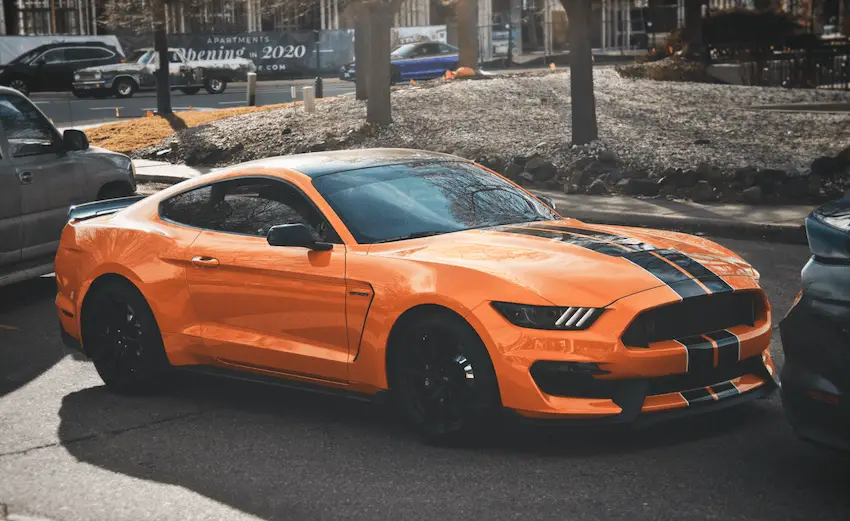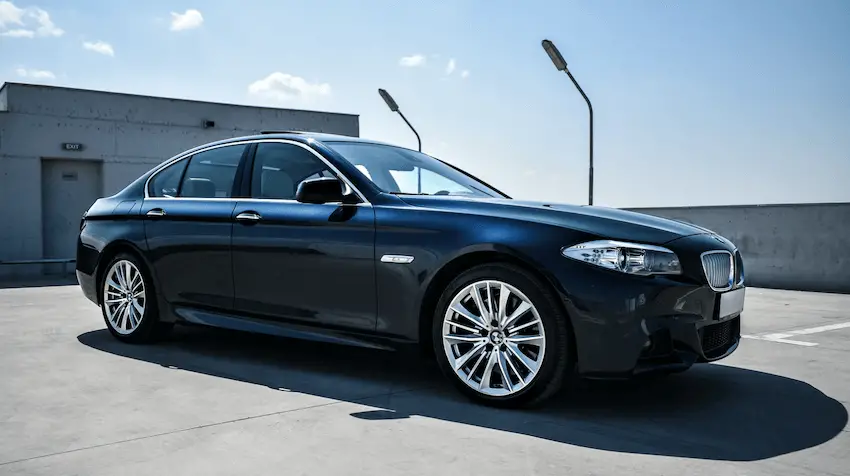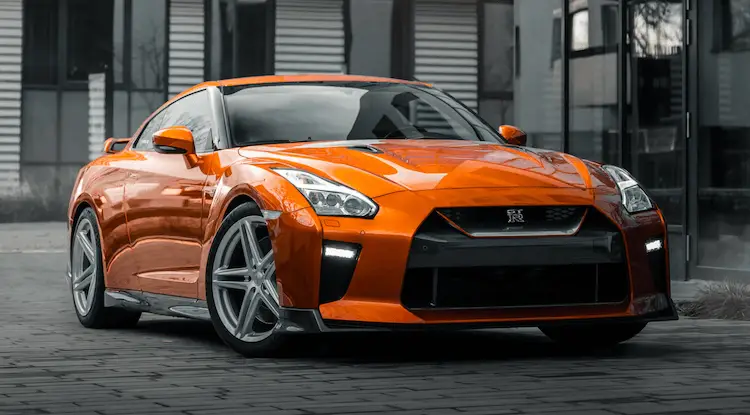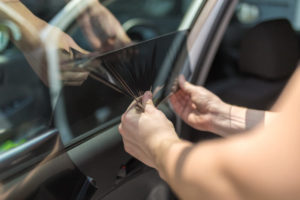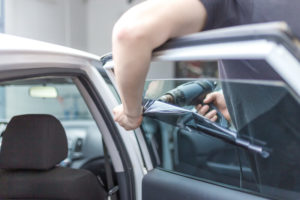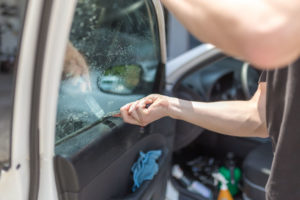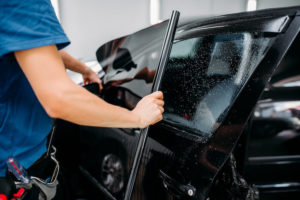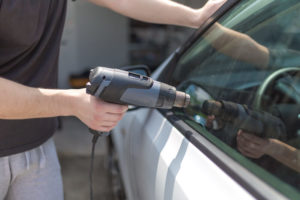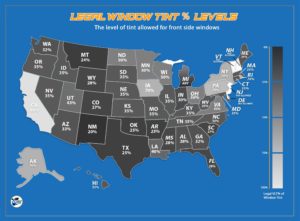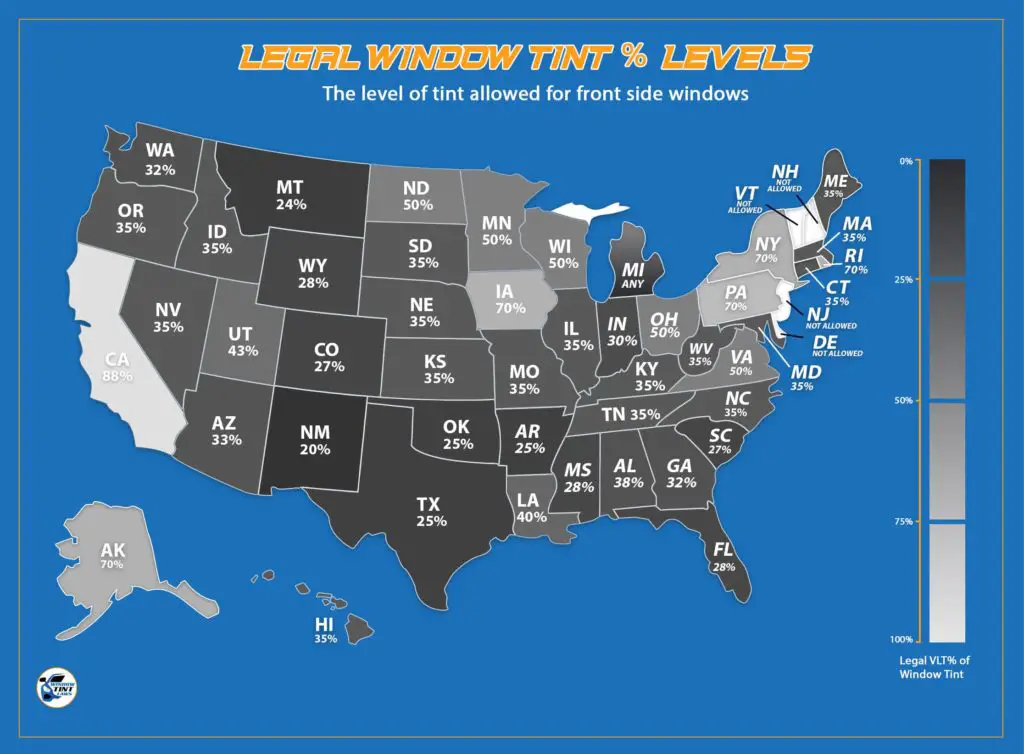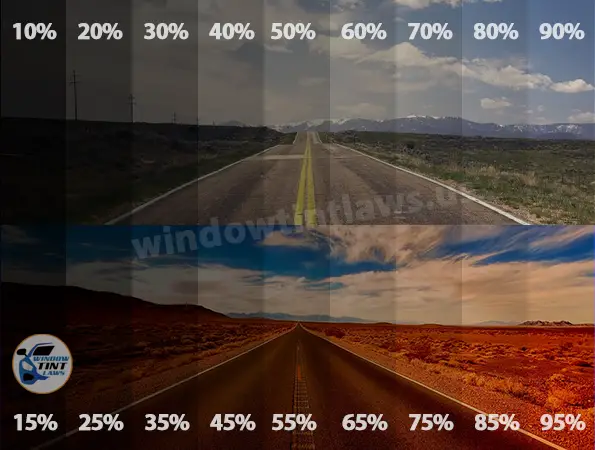If you’ve ever driven straight into the sunset, which most of us have, you know how difficult it is to see the road through the glare. The same problem exists when headlights from an oncoming vehicle make it difficult to see at night.
Getting window tint applied to your windshield can help solve this problem.
In this article, we talk about window tinting on your windshield for cars and motorcycles and the benefits of installing window film on your vehicle.
Can I put window tint on my front windshield?
Yes, it is possible to tint your front windshield, however, there are strict window tinting laws that you need to follow. These vary by State (we provide more detail below) but due to tight regulations, we highly recommend having your windshield tinted by a recognized professional who understands the nuances of the State laws.
There are also laws regarding window tint on your rear window and side windows, however, these are not as strict as those pertaining to your front windshield. To learn more about tinting the rear and side windows, check out our most popular resources:
- Best D.I.Y WIndow Tint Kits
- 7 Must Know Benefits of Tinted Windows for Your Car
- Best Window Tint Film To Buy
- How Much Does it Cost to Tint Car Windows?
What is the purpose of a window tint on your front windshield?
Adding window tint to your front windshield is not for the purpose of darkening the window, but rather to give you some protection from harsh UV rays, and prevent glare from the sun during the day or headlights during the night.
It provides safety from shattered glass and possible break-ins. We explain the benefits in more detail below.
The benefits of window tint on your windshield
We’ve spoken about the fact that window tinting will help block out any glare caused by the sun, or headlights during the night.
But another key benefit that a lot of people don’t realize is that window tinting your windshield will also protect you from harmful UV rays and significantly lower the heat levels inside your vehicle.
Much like tinted side windows, the upholstery of your vehicle will be protected from sun damage as well.
Window tinting also protects you from glass breakage. It makes your windshield shatterproof which reduces the chances of being cut by flying glass if you are in an accident and acts as a deterrent from thieves trying to get into your vehicle.
Lastly, many people have their windows tinted to improve the appearance of their vehicles.
Is window tinting on my windshield legal?
Window tint laws vary according to what state you are in. We recommend checking your specific state’s laws on tinting your vehicle windows by clicking here before moving forward with windshield window tinting.
Laws also differ according to which windows you are wanting to tint. Typically, front side windows have to be lighter than the rear window to allow the driver to see the road clearly from the side.
The law also differs according to your vehicle type. SUVs will differ from passenger cars when it comes to the amount of visible light transmission allowed. Learn the difference between Passenger and Multipurpose vehicles, here.
How much visible light transmission (VLT) is allowed?
Again, this is something that will vary according to your State, however, it is common to have up to 80% visible light transmission (VLT) on windshield tints. This means that 80% of visible light can penetrate the glass. The lower the percentage, the darker your window tint will be.
There are certain films used for tinting windows that are virtually clear, such as ceramic film. You can still see clearly inside or outside of your vehicle so it is safe to drive, and you can see clearly day or night.
What is a tinted windshield strip?
Tinted windshield strips, also called shade bands, are quite common in newer car models.
The tinted strip film covers the entire length of the windshield and extends from four to six inches down from the roof. Sometimes the strips are a dark shade of blue or are made out of a pixel pattern that blocks out the visible light.
Because the strip only covers the top couple of inches of your windshield, it does not obstruct the driver’s view of the road. This means it’s safer at night than tinting the entire windshield where most of the light is blocked.
Shade bands are made to fall in line with local regulations on window tint since they only cover the top few inches of your windshield.
Looking to apply windshield window tint at home? We recommend these popular window tint strips:
LEXEN Universal Size PreCut Curved Sun Strip Window Tint with 5% Darkest Shade
What is a partial windshield tint?
Some drivers choose a window tint that only covers part of the windshield. This might be because their local authority only allows the top of the windshield to be tinted, or they simply prefer it over fully tinted windows.
There are numerous benefits to partial or top-of-windshield tints.
For one, it’s considerably cheaper than a fully tinted window. The window tinting material covers only the top portion of the glass, so there’s less to pay for.
Tinting the top of the windshield reduces visible light transmission when the sun is hanging just above your windscreen, without impairing the driver’s vision. For this reason, many drivers choose partial over full tinted windows.
Some car manufacturers include top glass tints in their cars, so you can purchase a new car with its window tinting the way you want.
Tinted windows on a motorcycle
Lots of motorcyclists choose to window tint their windshields.
Motorcycle windshields can make it difficult to see since they reflect a lot of glare from the road. This can be hazardous to riders. Because of this, some motorcyclists choose to tint their front windshield, others remove the windshield entirely.
Although motorcycle windshields are made from a type of perspex and not glass like car windows, installing tints of front windshields on motorcycles is done in the same way as a normal car window tint installation.
A thin layer of adhesive vinyl is placed over the windshield which blocks out some of the light. There are also custom design pieces of vinyl available on the market to give your bike a more personalized effect. Installation is quick and easy.
Some motorcycle riders also choose to spray-paint their front windshield to block out the glare. This can be harmful as the paint is not transparent and will entirely block your view.
Should I get my front windshield tinted?
If you live in a very sunny area and drive a lot then getting a partial or full front windshield tint is a very good idea. The benefits for glare and heat reduction, UV rays protection, and safety are significant and worth the installation expense.
However, we cannot stress enough that you need to check the laws in your state before going ahead and tinting the windshield of your vehicle. You can be fined heavily if caught with a percentage that is illegal in your state. Make sure to first read up on your state’s current laws.

